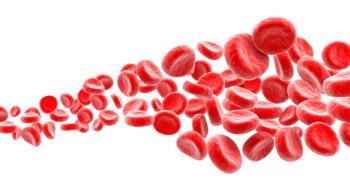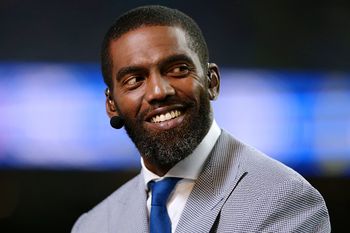
Understanding the Complexity of Non-Hodgkin Lymphoma
Transcript:
Loretta J. Nastoupil, MD: Welcome. Thank you for joining us. During this CURE® program, we’ll be discussing non-Hodgkin lymphoma, including the various disease subtypes that make up this general term. More importantly, we’ll be discussing the patient journey through the various treatments and survivorship that are encompassed with this disease. Joining me today is Whitney Neighbors, someone I also care quite a bit about. It’s important to note that she’s my clinical patient, as I work at the University of Texas MD Anderson Cancer Center in Houston in the Lymphoma Clinic. Good morning.
Whitney Neighbors: Good morning. Thank you for having me.
Loretta J. Nastoupil, MD: We’re going to cover non-Hodgkin lymphoma. As I mentioned, this is something that I spend a great deal of time learning about and treating patients for. I think I should start by describing what non-Hodgkin lymphoma means. When you were first diagnosed, what was your impression of the term “non-Hodgkin lymphoma”?
Whitney Neighbors: I had no idea what it meant. I knew that there were generally 2 different types of lymphoma: Hodgkin and non-Hodgkin. I couldn’t tell you what the difference was. I didn’t know what it meant. I generally knew that lymphoma was a cancer of the blood but was otherwise unfamiliar with it. I’d never had it affect my life through a family member or a friend, so I really didn’t have any information.
Loretta J. Nastoupil, MD: I think that’s true for most patients. Again, it’s an uncommon entity. We are most familiar with breast cancer, colon cancer and lung cancer. Patients have either experienced one of those types of cancers themselves or they’ve had a family member who had one of the cancers. So it’s not uncommon, when I meet patients for the first time, that they know the term “non-Hodgkin lymphoma” but don’t really know what it means. It becomes even more burdensome as we start talking about staging. As you mentioned, this is a blood cancer. If you think about your blood and the fact that it goes throughout your whole body, you realize that it is common that the vast majority of patients will have advanced-stage disease.
In the beginning — and you can attest to this — I spend most of my time going over what the diagnosis and stage are. I explain what that means for the patient. In my opinion, I think it’s important to note the type of non-Hodgkin lymphoma. That determines more than the stage. More than anything, in terms of my expectation for you, it determines whether or not you’re going to be here 10 or 15 years from now. I think that’s what most people want to know.
And so, I generally express that there are different types. There are T-cell non-Hodgkin lymphomas and B-cell non-Hodgkin lymphomas. B-cell lymphomas are much more common — that’s what the vast majority of patients present with — then we break it down a little bit further. There are indolent non-Hodgkin lymphomas of the B-cell subtype, and there are aggressive non-Hodgkin lymphoma subtypes. You actually have diffuse large B-cell lymphoma, which is the most common subtype of B-cell lymphoma.
What I shared with you at the beginning and what I share with all patients is that this is very curable regardless of the stage. I think that’s the most important thing to remember when you’re meeting with an oncologist. So much information is shared with you, and it can be overwhelming. It’s important to stay focused on what the goal is, and the goal is cure.
We generally give between 4 and 6 cycles of chemotherapy. Occasionally, we include radiation, though oftentimes we do not. At the end of that treatment course, we expect that the lymphoma will be gone and never come back. Is there anything that I missed in that description that you recall from those early visits?
Whitney Neighbors: No, I think you always did such a great job of breaking it down. You were very patient in answering all of the questions that I had. It’s so overwhelming to learn that you have this disease. Where do you go from here? Cancer has that stigma of “You’re going to die.” So when you hear that word, it’s very, very intimidating and frightening. It’s great to be able to walk in to your doctor and have them comfort you and explain to you how this works, what it’s done to your body and that you’re going to be OK: “We’re going to follow this protocol and get through these stages.” You did all of those things. You helped me understand what was in front of me. It wasn’t going to be easy, but there was a path forward. You reassured me that we would do it, and, hopefully, get to the other side and be in that category — the success and cure category. So far, so good.
Loretta J. Nastoupil, MD: I agree. To be fair, we’ll cover the other lymphoma subtypes. Whitney has the most common subtype. Again, the goal is cure. There are others for which that may not be the goal. For indolent lymphoma, the goal may be giving someone a normal life expectancy. That may not be without disease or without the expectation that it will come back. Oftentimes, when you’re sitting in a waiting room, when you’re sharing your story with other patients, keep in mind that non-Hodgkin lymphoma may comprise 60 different diseases — when we start to break it down according to all of the individual subtypes — and the expectations and the treatment may be vastly different.
If you look at it in terms of determining whether it is it a T-cell lymphoma or a B-cell lymphoma or an aggressive or indolent lymphoma, there may be some very common things and common goals.
Transcript Edited for Clarity





